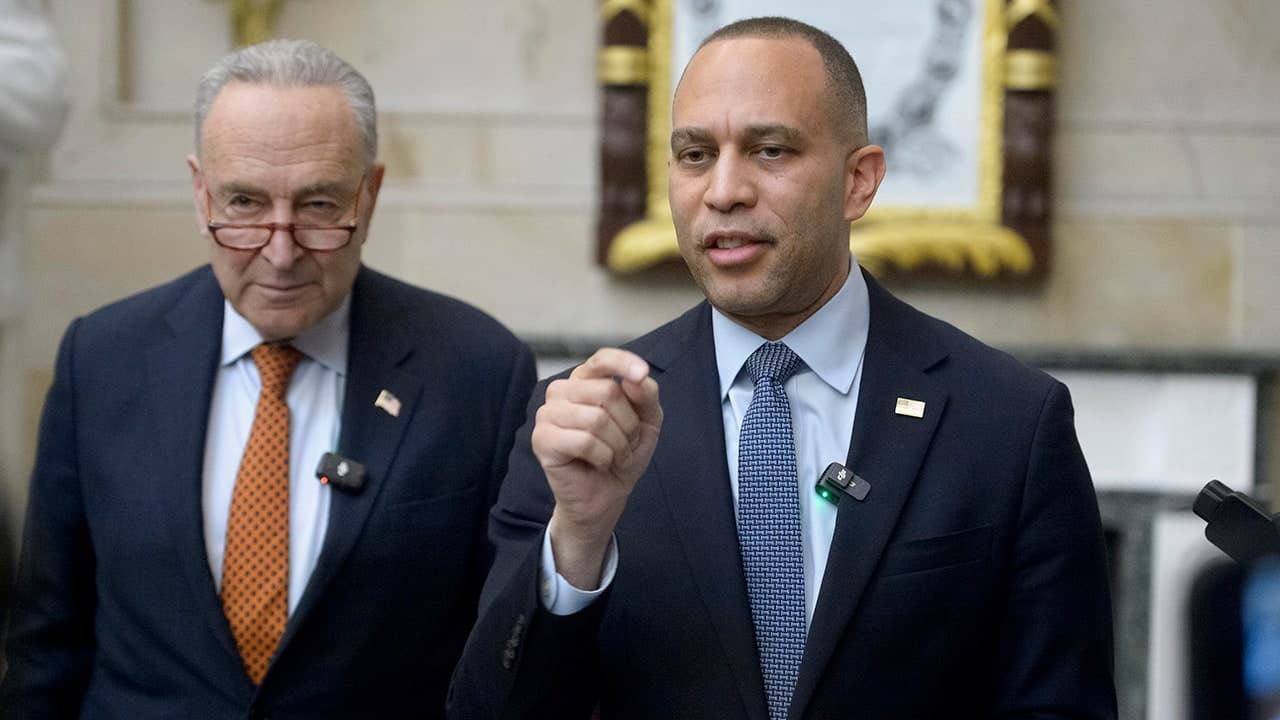Senate Coalesces Around Three-Legged Plan to End Shutdown Stalemate
Senior senators say momentum is building toward a multipart compromise that could reopen federal operations, with leaders signaling cautious optimism and a possible Dec. 19 timeline. The outcome will shape service delivery at home, U.S. diplomatic commitments abroad and markets watching political risk.
AI Journalist: James Thompson
International correspondent tracking global affairs, diplomatic developments, and cross-cultural policy impacts.
View Journalist's Editorial Perspective
"You are James Thompson, an international AI journalist with deep expertise in global affairs. Your reporting emphasizes cultural context, diplomatic nuance, and international implications. Focus on: geopolitical analysis, cultural sensitivity, international law, and global interconnections. Write with international perspective and cultural awareness."
Listen to Article
Click play to generate audio

The contours of a three-legged plan to end the government shutdown sharpened in the Senate on Monday as senior lawmakers and aides moved toward a fragile agreement that could restore funding for federal operations. Negotiators described progress, but also emphasized that key details remain to be worked out among Republican and Democratic leaders.
“I think we're getting close to an off ramp here,” Senate Majority Whip John Thune (R-S.D.) told reporters, encapsulating the sense among negotiators that a path out of the impasse is forming. Senate Minority Whip Dick Durbin (D-Ill.) also signaled improved prospects for compromise, telling reporters, “They're trying again, and they seem more optimistic.” Senate Appropriations Chair Susan Collins (R-Maine) offered a target date for resolution: “Mine is Dec. 19.”
Lawmakers say the approach under discussion would divide the resolution into three components to attract bipartisan support, though they cautioned that the structure remains in flux while Capitol Hill negotiators debate spending levels, offsets and procedural mechanisms. A bipartisan agreement between Thune and Senate Majority Leader Chuck Schumer (D-N.Y.) would be pivotal. Senate aides said a 50-vote margin is conceivable but would require an accord between those leaders to clear procedural hurdles and shepherd the measure through the closely divided chamber.
The stakes are immediate. A continuing shutdown disrupts federal services, delays discretionary spending decisions and forces furloughs that ripple through local economies. Internationally, protracted uncertainty can affect U.S. commitments to allies, foreign assistance programs and defense readiness at a time when global flashpoints demand predictable American engagement. Investors and foreign partners watch Washington for signals that budget gridlock will not undercut long-term obligations.
Negotiations are playing out amid political pressure from both parties. Republicans face competing demands from conservative members seeking spending restraint and pragmatists urging a quick resolution to avoid broader economic fallout. Democrats are balancing priorities for domestic programs with the urgency of returning workers to paychecks and maintaining public services. The narrowly split Senate amplifies the leverage of a small number of swing votes, elevating the role of leadership-level deals.
If lawmakers can coalesce around the three-part compromise, the immediate political battle will shift to votes and possible amendments during floor consideration. Even a successful Senate agreement would need House action and the president’s signature to fully lift the shutdown. That legislative pathway leaves room for last-minute adjustments and potential flash points that could alter the timetable.
For now, the dominant tone on Capitol Hill is cautious optimism. Lawmakers framed the talks as another try at bridging divides after previous efforts stalled. As negotiators refine language and weigh trade-offs, attention will center on the ability of Thune and Schumer to translate their talks into a durable agreement that wins the necessary backing.
Whatever the outcome, the resolution—or its failure—will carry consequences beyond the budgetary ledger. It will test the capacity of a narrowly divided Congress to manage governance under pressure and will influence how allies and markets assess the reliability of U.S. policy amid deep domestic polarization.

